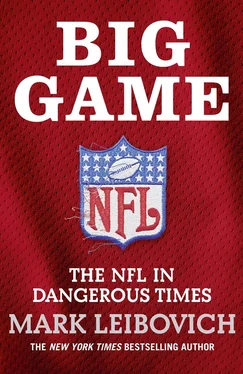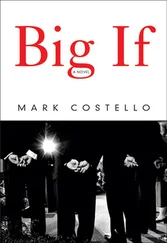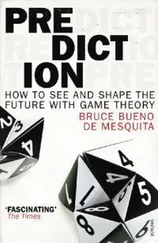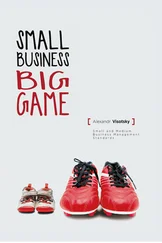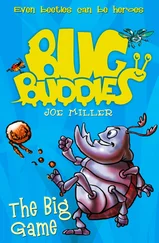Allegiance to the Pats can be tricky. We lead the league in crosses to bear. Our owner can be a whiny star-fucker and sniveling in victory. Everyone who follows pro football outside of New England is sick of us (excluding Donald Trump, Jon Bon Jovi, and maybe a few others). Big portions of the Patriots’ fan base have become entitled assholes. And yes, I might be one of them. Yet I am loyal to the Pats pretty much unconditionally, give or take the odd cheating rap or occasional Aaron Hernandez.
If anything, my infatuation with pro football has only deepened, even as I’ve supposedly become instilled with more mature priorities and a fuller knowledge of how the game operates and the kinds of people who operate it. It started in second grade, when my best friend, Josh, and I wrote a letter to our favorite player, Jim Plunkett, and invited the young Patriots quarterback to Josh’s house for dinner (he never responded). This attachment has endured through the years and withstood a steady helmet-slapping of cognitive dissonance over whether I should know better than to keep following this sport as closely as I do. Scary research on posthumous football brains has been as impossible to miss as the testimonials from still-living retirees about the sad state of their bodies. (To wit: “My life sucks,” Jim Plunkett, then sixty-nine, told the San Jose Mercury News in 2017. “Everything hurts.”)
If you love football, you get good at blind spots and blind sides. NFL Network and NFL Films captivate with round-the-clock fairy tales: “It starts with a whistle and ends with a gun!” A football life can be irresistibly Hollywood and parable-ready—like the up-from-dirt saga of lineman Michael Oher, the protagonist in Michael Lewis’s The Blind Side. But it’s easier to ignore how his story ends, if anyone even noticed: Oher missed most of the 2016 season with the Carolina Panthers after a series of concussions. He posted a photo of ten pill bottles on Instagram and captioned it “All for the brain smh.” Oher eventually deleted the post from Instagram, and the Panthers eventually deleted Oher from their roster.
The Lords of the League can appear overmatched by the moral and cultural moment that confronts them. Roger Goodell, the game’s embattled commissioner, who in late 2017 received a contract extension that could pay him up to $200 million, always seems to be presiding over some self-inflicted mess. Under his watch, the NFL has gone from being one of the most unifying institutions in America to the country’s most polarizing sports brand. Goodell himself seems not inclined to accept much blame for this trajectory. “I think it’s a little more reflective of how somewhat divided our society is at this stage,” he told me in his New York office a few weeks before the Super Bowl.
Still, my four-year incursion into the NFL has also led me to another impression: that for whatever reckoning might be in store for the sport—and whether that reckoning comes now or later—the game’s appeal is powerful and durable, and its redemptions are never far away. The sport has a way of grabbing you back. It happened here in Minnesota three weeks earlier, when the Vikings quarterback Case Keenum threw a 61-yard touchdown pass as time expired to shock the Saints in the NFC Divisional Playoffs. The play sent Twin Cities fans into merry conniptions, lasting right up until the moment their team got spanked a week later by the Eagles. It would be relived and rehashed around the country for several days, no doubt by people who a few months earlier were declaring themselves “done” with football over some kneeling player, lousy ref’s call, or other such outrage.
What to make of this beautiful shit-show of a league? I get asked existential versions of the “How much longer?” question myself. Which camp was I in? The true believer camp (“If we lose football,” said David Baker, the president of the Pro Football Hall of Fame, “I don’t know if America can survive” 1) or the cataclysm camp (“In twenty-five years, no one in America will play football,” 2said Malcolm Gladwell)?
Are we witnessing the NFL’s last gasp as the great spectacle of American life? I’d probably put the game’s long-term survival as a slight favorite over the doom scenarios. Pro football has prevailed too many times to bet against, in spite of itself.
Beyond that, I’m punting, or turning the question back on ourselves—the hundreds of millions of us who have made the National Football League the superpower it is. Why does this game still mean so much, and why are we still here?
THE WORST THING ABOUT PRO FOOTBALL IS THAT A LOT OF IT HAS nothing to do with football. It has so much business and hair spray crusted over it: so many sideshows and expert panels “breaking things down for us” and a whole lot of people you don’t want to deal with or watch on TV—and then you supersize all of it, stretch it over a week, and here we have the Super Bowl.
Our hosts did not disappoint. Neither did the weather. It was a frigid week in the “Bold North,” as Minnesota is apparently now calling itself, courtesy of its Super Bowl 52 host committee. I hadn’t heard “Bold North” before, just like I had no idea why Philly fans had taken to wearing German shepherd masks as their trademark identifiers instead of something, say, more majestic and birdlike (apparently the canine masks were meant to evoke the Eagles’ underdog status—got it). This 2018 gridiron carnival played out in a dream sequence that featured the various parading werewolves of the NFL: “I saw Bud Grant walking with the queen. I saw Odell Beckham Jr. walking with the queen. I saw (Boomer) Esiason drinking a Starbucks at the Loews Hotel. And his hair was perfect.”
Both the Eagles and Patriots, and most of the international media, were based out at the Mall of America in Bloomington, next to the airport. By Friday, the warring Taliban factions 3from Massholia and Phillystan had descended on this retail colossus—big enough, by the way, to fit 7 Yankee Stadiums, 32 Boeing 747s, or 258 Statues of Liberty. The MOA also has its own in-house counterterrorism unit for our safety. Fans pestered players at the food court, a Chinese TV crew broadcast from the Splat-O-Sphere (at the Mall amusement park), and armed SWAT teams prowled among the Buffalo Wild Wings, Kiehl’s, and Benihana. Philadelphians were warned, as a security precaution, not to don their German shepherd masks inside the complex or to break into their menacing renditions of “Fly, Eagles, Fly.” They appeared undeterred by the counterterrorism unit.
As happens whenever large bunches of media people assemble in one place, there was no shortage of bitching about something or another. This week’s über-complaint, obviously, involved why on God’s frozen earth we were here. As in, why would the league plunk down its marquee event in this NFC North Siberia? The consensus is that pro football has been overtaken by a “biblical plague of dickheads,” to paraphrase the late writer Richard Ben Cramer (granted, he was talking about journalism).
Like many things with the NFL, the real answer included dollar signs. This was all bribery fodder, essentially, or a Bold North variant on the civic blackmail and corporate welfare model that’s gotten many grand NFL edifices built and paid for. Football had awarded its grandest pageant to the Twin Cities in order to sweeten an already sweetheart deal in which state officials had agreed to subsidize a new billion-dollar stadium for the billionaire owners of the Vikings. And taxpayers would foot about half the bill for a football Versailles whose primary beneficiaries—a pair of New Jersey real estate barons—cared little about the cash-strapped predicament of Minnesota schools, roads, and “essential” services that were less essential than football.
Читать дальше
